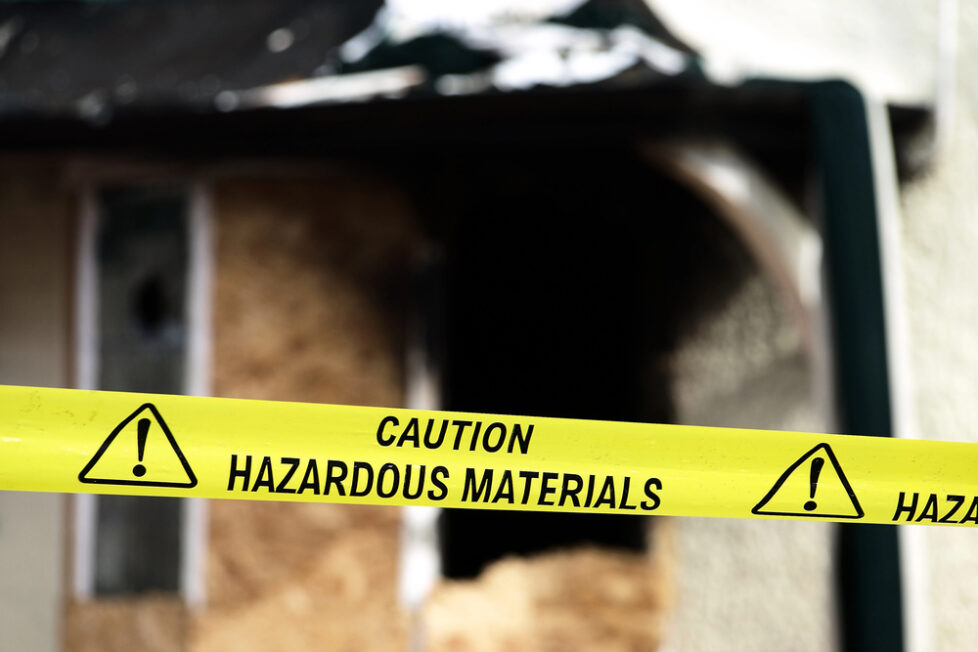Lesser-Known Construction Hazards that Business Owners Should Be Aware Of

LINKS TO CONTENT
ToggleWhen it comes to construction, most business owners are well aware of the common hazards such as falls and heavy machinery accidents. However, numerous lesser-known hazards can pose significant risks on construction sites. Recognizing and addressing these hidden dangers is crucial for maintaining a safe work environment and minimizing potential liabilities. Here’s a deep dive into some of these often-overlooked construction hazards.
While most are vigilant about live wires and electrical installations, electrical hazards can sometimes lurk in unexpected places. For instance, temporary lighting and makeshift connections often used during construction phases can be improperly insulated or poorly maintained.
Additionally, underground electrical cables can pose risks during excavation work. Business owners should ensure thorough inspections and adherence to electrical safety standards, even for temporary setups.
Recently, in February, NBC4 Washington reported that three men were severely injured by a high-voltage line at a construction site in Alexandria, Virginia. Two workers sustained life-threatening injuries, while the third had critical but not life-threatening injuries.
The incident occurred at a row of townhomes with above-ground power lines, illustrating the dangers that can exist even in seemingly straightforward setups. This highlights the need for comprehensive safety checks and strict adherence to electrical safety protocols to prevent such accidents.
Construction sites often involve activities that release harmful dust and fumes, posing significant respiratory hazards to workers. This includes apparent risks from materials like asbestos and lesser-known dangers such as silica dust from concrete cutting and welding fumes. Proper ventilation is crucial to mitigate these risks.
A comprehensive study by Duke University involving 18,145 construction workers shed light on this issue. The study revealed that over 25% of these workers developed respiratory symptoms and impairments (RSP). Moreover, it increased their risk of all-cause mortality, including deaths from cardiovascular disease, respiratory disease, and lung cancer.
Implementing adequate ventilation systems and ensuring workers use appropriate respiratory protective equipment are essential to protecting worker health. This issue is not an isolated accident but a systematic failure of workplace safety.
Employers must prioritize installing adequate ventilation and providing safety gear to prevent these easily avoidable hazards. If employers neglect these responsibilities, workers should take action. Organizing collectively and hiring a personal injury lawyer can increase the chances of effecting change and safeguarding workers’ rights.
TorHoerman Law notes that personal injury lawyers specializing in workplace safety can be crucial in this process. These lawyers would first thoroughly investigate the working conditions to gather evidence of any negligence or violations of safety regulations.
They would then represent the workers in legal proceedings, aiming to hold the employers accountable for failing to provide a safe work environment. This could involve filing lawsuits, negotiating settlements, or advocating for improved safety measures.
Silicosis is a type of pneumoconiosis caused by inhaling fine silica dust. It leads to inflammation and scarring of the lungs, resulting in symptoms such as cough, shortness of breath, and chest pain. Silicosis can be progressive and may lead to severe respiratory impairment.
The dangers of loud machinery on construction sites are well-documented, but the long-term effects of sustained noise exposure are often underestimated. Prolonged exposure to high decibel levels can result in noise-induced hearing loss, a potentially permanent condition.
According to the CDC, 52% of noise-exposed construction workers report not wearing hearing protection. This is either due to a lack of adequate protective gear or personal negligence.
Employers must take responsibility by conducting regular noise assessments, providing effective hearing protection, and enforcing its use among workers. Failure to do so exacerbates an already concerning issue.
Tinnitus is a condition where you hear sounds like ringing or buzzing in your ears without any external noise. It’s a widespread issue ranging from mild to severe and may impact one or both ears.
Tools such as jackhammers, grinders, and compactors generate significant vibrations that can lead to Hand-Arm Vibration Syndrome (HAVS). This condition can cause numbness, pain, and even permanent damage to the hand and arm’s blood vessels, nerves, and muscles.
Using anti-vibration gloves and limiting the duration of exposure to such tools can help mitigate these risks.
In the early stages, symptoms of HAVS can be managed and improved with appropriate treatment and changes in work practices. However, in more advanced cases, the damage may be permanent, making it important to address the condition as early as possible.
Heat-related illness has long been recognized as a significant occupational hazard. Its risks increase as extreme heat conditions become more frequent across the United States. A 2023 CAP report estimated that nearly 235,000 emergency department visits each summer are attributable to heat-related or heat-adjacent illnesses. Additionally, over 56,000 hospital admissions are linked to these conditions.
This issue is particularly severe for construction workers, who often have no choice but to work in the sun.
Employers should provide shaded rest areas to mitigate these risks and ensure workers stay well-hydrated. They should also schedule strenuous tasks during cooler parts of the day. These precautions can significantly reduce the likelihood of heat-related illnesses.
Construction work is not only physically demanding but also mentally taxing. Tight deadlines, long hours, and high-risk activities can contribute to stress, anxiety, and other mental health issues. According to the National Library of Medicine, about 16% of construction workers in the USA experience significant mental distress.
To support these workers, offering mental health resources, encouraging a healthy work-life balance, and creating a supportive work environment are crucial. These steps can help improve their overall well-being and make the job less stressful.
Overall, while many construction hazards are well known, it’s also essential for business owners to be aware of these lesser-known dangers. By proactively identifying and mitigating these risks, employers can create a safer working environment, enhance productivity, and reduce potential liabilities.
Investing in safety training, regular site assessments and proper protective measures is key to safeguarding construction workers’ health and well-being.
